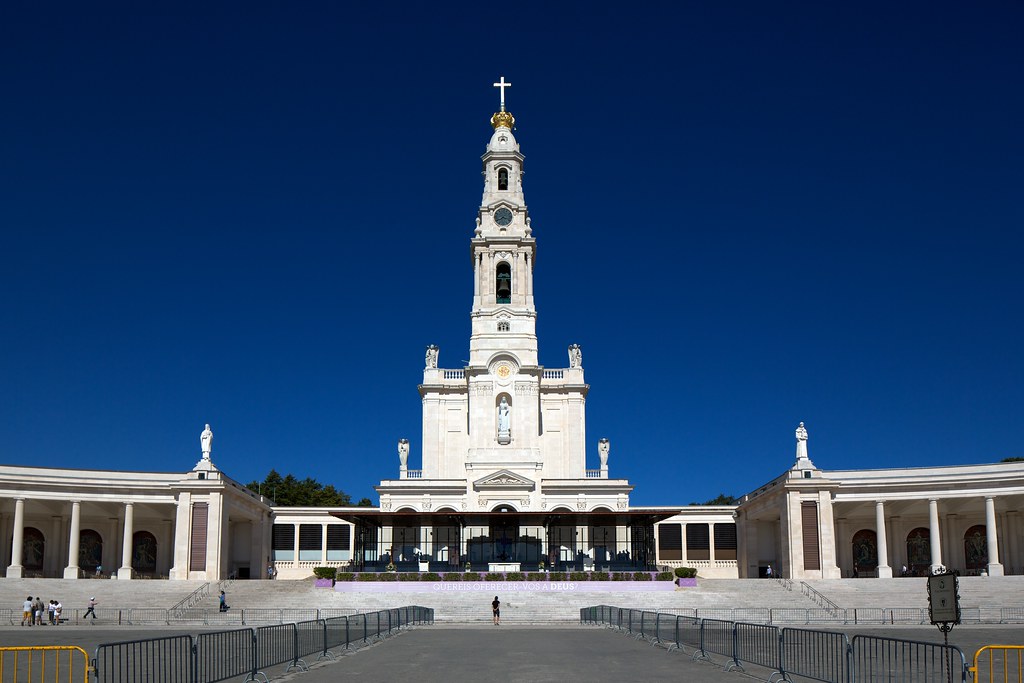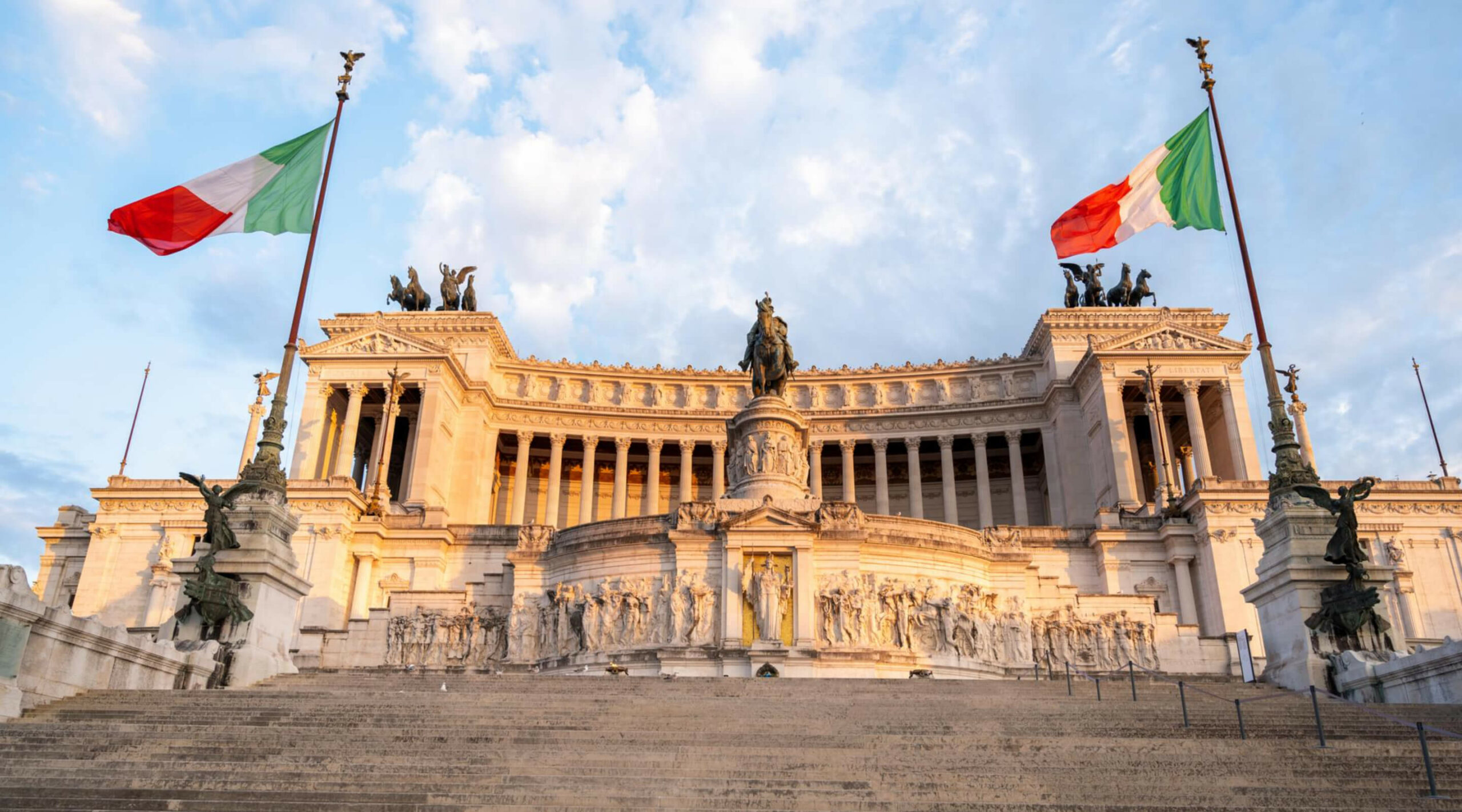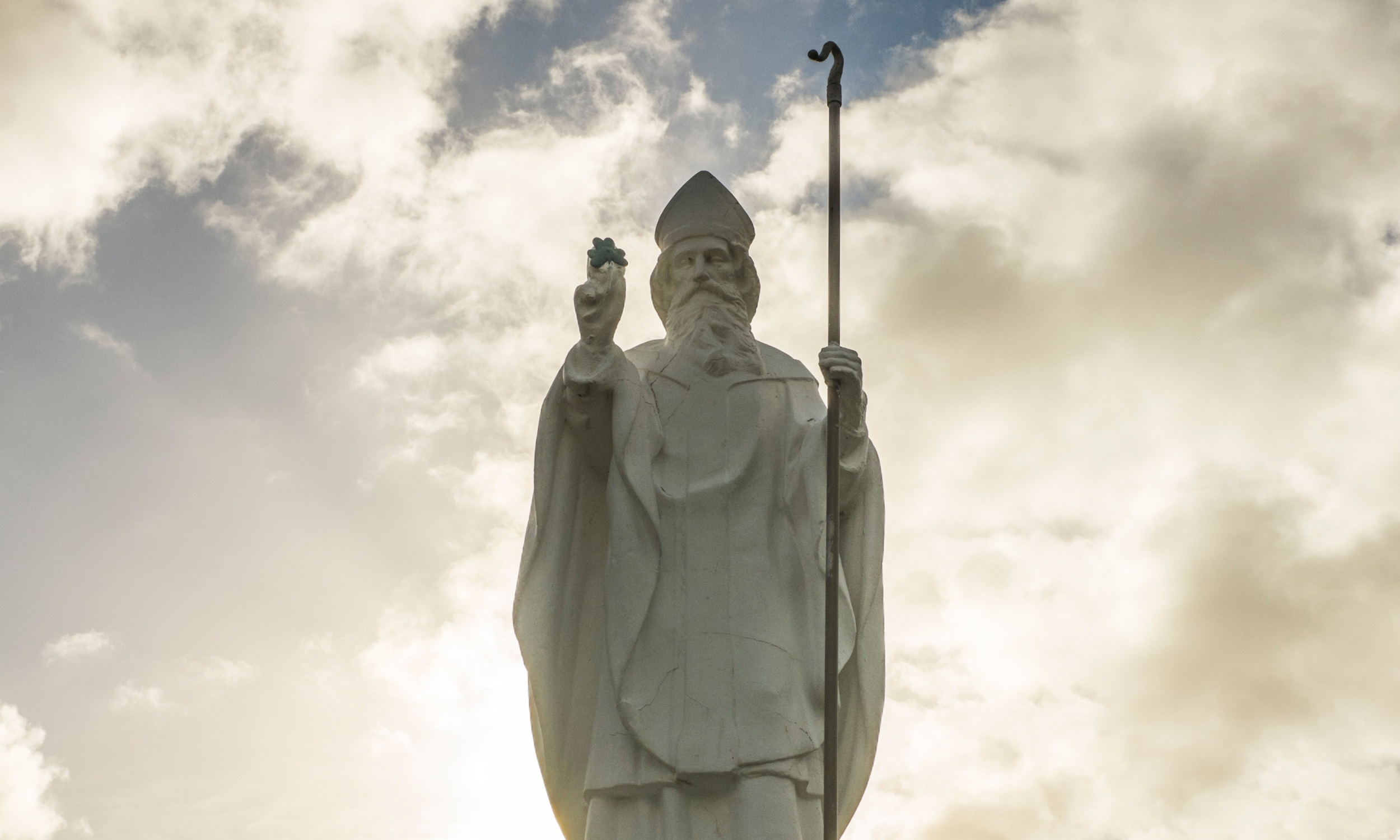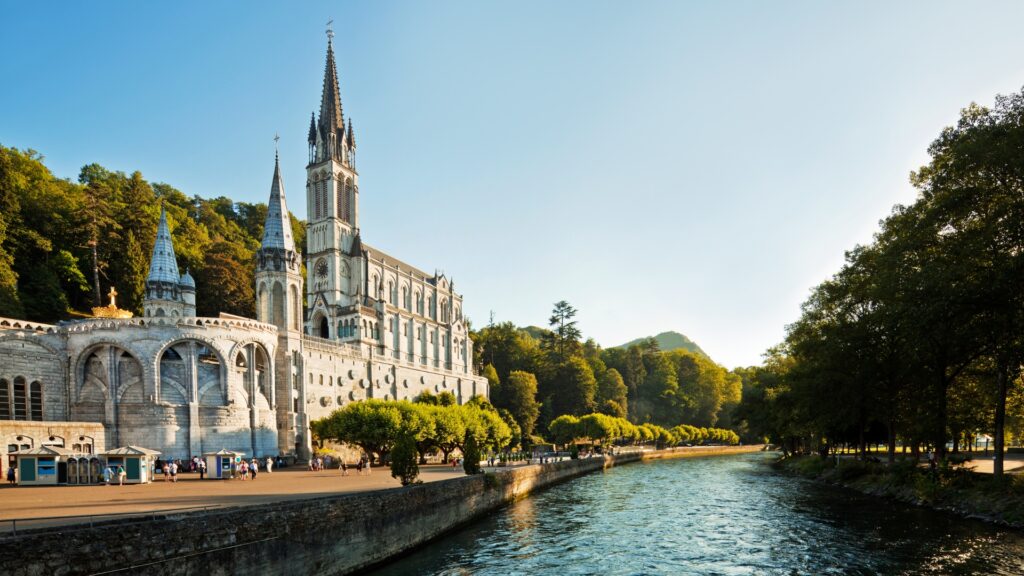Verso Ministries is celebrating five years of Catholic pilgrimage this fall! To celebrate the anniversary of our founding, Verso CEO and Founder, John Paul, was asked to reflect upon and share about each of our five key destinations. Read on to discover what these holy destinations mean to John Paul and hear about some of his favorite memories over the last five years.
Destination 1: World Youth Day
Can you describe what World Youth Day means to you? What impact has it had on your life?
In a very practical way, World Youth Day has been a life-changing experience for me. It was at World Youth Day 2019 in Krakow that I started Verso, so obviously that’s had an immense impact on my life.
That aside, World Youth day is also an incredibly inspiring event. For me, being part of a large crowd is rarely a fun experience–I think of things like being crammed in a subway or trying to move through a large group, which aren’t great moments for me.
But World Youth Day is somehow the opposite. There’s this massive crowd of people, but being in that group isn’t overwhelming. The primary feeling of going to World Youth Day is pure joy, and I was hardly ever bothered by how many people there were. I’ve never met a more joyful crowd of people in my whole life, and that’s why I think it’s such a different experience.
On a more theological level, World Youth Day is also a beautiful illustration of the unity and diversity of our Church. You meet people from literally every corner of the world, which is a beautiful thing when you’re all there for the same reason–worshipping Jesus and growing in your faith.
You traveled to WYD 2019 in Panama with Verso. What’s one of your favorite memories from that experience?
Definitely adoration with Pope Francis during the vigil prayer service. Every World Youth Day concludes with a Saturday vigil, sleeping under the stars, and Mass on Sunday morning. Adoration that Saturday night was such a powerful experience.
You’re in the middle of a field, on your knees, praying with hundreds of thousands of people. It’s completely quiet, and you’re all in adoration together. It was so memorable to be in the midst of so many people and have it be so quiet.
We were all there to encounter Jesus in some way, shape, or form–it was a great reminder of why we were all there together–to worship our Lord and listen.
Destination 2: France
A lot of people travel to France as tourists, and they only stop by places like Notre Dame to look at the art and architecture. How would you say going on a pilgrimage to France is different?
Looking at the history of the Church in France is a chance to see a story of rebirth and the strength of our faith in the face of hardship. In the past 300 years or so, how faith has been lived out in France has changed drastically. During the time of the French Revolution, all of the priests had to go into hiding, and Mass couldn’t be celebrated publicly. This also meant that everything run by the Church–schools, hospitals, orphanages–was also shut down.
Then in the early- to mid-1800s, there’s this flowering of rebirth in the Church. If you look at the time when religious orders were founded, this period in French history stands out because so many orders have their start during this time period. It’s a testament to the hope and faith of the people who started these orders that they were willing to do that so soon after a time when their faith put them in danger.
To me, that’s the story of going to France on pilgrimage–there’s all these saints who had such immense hope and faith, and that’s so inspiring to me. It really illustrates what we’re called to in the Christian life: revival, restoration, and rebirth.
Is there a specific place in France that has special significance for you? Can you describe that moment for us?
This isn’t a typical place that we travel on our pilgrimages to France, but because of my connections with the Congregation of Holy Cross and Notre Dame, going to Le Mans, France was incredibly meaningful for me.
Les Mans is a small city in France where Bl. Basil Moreau founded the Congregation of Holy Cross. Later, the Congregation of Holy Cross sent a group of priests and brothers to Indiana to found a university, which is now the University of Notre Dame. Because of my time at Notre Dame, Holy Cross has had an immense influence on my life, so being able to see where Holy Cross was founded was a beautiful experience.
In a lot of ways, going to Les Mans felt like how visiting your grandparents’ house feels–I really was going to visit my religious ancestors, because of how much Holy Cross has influenced my faith and my life. Visiting Moreau’s tomb, seeing the convent where he went on retreat and lived out his last years, and walking through the streets where Holy Cross was founded really felt like visiting the history of my own faith story.
Destination 3: Italy
Obviously one of the main attractions for any Catholic pilgrim travelling to Italy is the Vatican, which is understandable. Is there somewhere else you think is often overlooked?
Going up the Holy Stairs, for sure. This is probably my favorite thing to do in Rome. It is popular among pilgrims, but most tourists wouldn’t go to the Holy Stairs. These are the stairs that St. Helen brought from the Holy Land to Rome, and they’re supposed to be the stairs that Jesus walked on during his Passion and trial.
As a pilgrim you go up the stairs on your knees, which I was definitely expecting to be easy the first time I did it! It’s actually quite a painful experience, because the wood covering the ancient marble of the steps has been worn down and warped, and that stairs are generally so crowded it takes about 20 minutes to get up them.
Beyond the discomfort, though, going up the Holy Stairs is a good exercise of prayerful contemplation about the Passion. As you’re praying on the Passion, maybe even taking the same path that Jesus did, you’re making your own small sacrifice through your discomfort.
Do you have a favorite memory from a Verso pilgrimage to Italy? What is it that makes that memory stand out to you?
For me that moment would be Holy Thursday evening, walking to all of the altars of repose. Since Good Friday is the beginning of the Triduum the Eucharist isn’t reserved in the tabernacle then. There’s a tradition in the Church that after the liturgy on Holy Thursday, the Eucharist is taken out and brought to a separate altar set up somewhere else in the church, the altar of repose. Traditionally this is followed by adoration for a few hours or even throughout the whole night.
In Rome, once the Holy Thursday liturgy is over, people start walking from church to church to church to pray for a few minutes in front of the Eucharist on the altar of repose in each one. After we went to Mass, we grabbed an on-the-go dinner from a walk-up pizza stall and starting walking from church to church.
We visited about 15 churches in the course of 2 hours, and every church was different. Some were massive, some were small and tucked away. Some were totally silent, and others were playing music. Some of them were incredibly elaborate, and others were simple–almost bare. In a lot of ways this was almost a pilgrimage within a pilgrimage. It was a very corporal way of experiencing the Holy Thursday altars, and it was very prayerful.
Destination 4: The Camino
Can you describe what makes the Camino different from any other long through-hike? How does faith play a role there?
The Camino is unique because of its focus on silence, contemplation, and introspection. Obviously you’re walking in the footsteps of Saint James–the destination of the Camino is the tomb of Saint James in Santiago. So you’re walking to visit the tomb of a saint, and it can be a very prayerful walk that’s full of silence and contemplation.
The idea is that a pilgrimage, especially a pilgrimage on foot, should mimic your pilgrimage through life with all of its joys, trials, and tribulation. It’s a great way to have time on your own and walk, pray, meet people, and reflect. The whole idea is that you spend time with yourself and also get to meet people along the way.
One thing that we emphasize when we take groups on the Camino is starting the morning in silence–everyone starts the day walking together in silence to cultivate contemplative, silent prayer.
Obviously a lot of time walking the Camino is spent in quiet reflection as you hike. As you look forward to traveling to the Camino, is there something in particular you are most eager to experience?
I’ve never been on the Camino, but one of the things that I look forward to most is the silence and being on my own. At the same time I’d be really excited to meet people along the way. I think more than any other pilgrimage, walking the Camino is a very communal experience. So many people do it, and the culture of the Camino is to help one another and live into the communal spirit of it.
Destination 5: The Holy Land
How has traveling to the Holy Land impacted your faith life?
The biggest thing that I learned when I went to the Holy Land for the first time–and keep re-learning every time I go–is discovering the humanity of Jesus in a very special way. There’s something about walking in the footsteps of Jesus that makes his humanity more concrete than just knowing it intellectually.
The best explanation I can give is that it’s like visiting a friend from college in their hometown. You meet their parents, you see their high school, and you get to eat at their favorite restaurant. All of these things that you’ve heard about them doing are suddenly things that you’re doing. By virtue of traveling to their hometown, you learn more about them.
By visiting the Holy Land, you learn those same things about Jesus. Even practical things like how far it is to walk from Jerusalem to Galilee. Going to the Holy Land for the first time gave me a much better understanding of the fact that Jesus was like me, and that he is fully human.
You’ve gone on pilgrimage to the Holy Land multiple times with different groups of pilgrims. Do you have a favorite moment or story that you’d like to share?
My favorite part of going to the Holy Land is walking the Via Dolorosa and then celebrating Easter Mass at Christ’s tomb. (Mass at the tomb is always Easter Mass, since it’s where the Resurrection happened.)
The Via Dolorosa is a commemorative Way of the Cross from where Jesus was condemned to death to the Holy Sepulchre, where he was buried. Obviously the exact route that he walked has been lost over time as Jerusalem grew and changed, but it’s a very powerful experience.
We leave the hotel when it’s still dark, in the very early morning. As we walk, we pray the stations of the cross. If we have time, we visit Calvary before we have Mass at the tomb, which is amazing.
Mass at the tomb is an incredible experience. There’s a structure built over the tomb itself, and the altar that’s built over the tomb is in a smaller, separate room. It’s a very small area, but you can actually fit about 40 people in there. If you have a small enough group and are celebrating a private Mass they actually lock you in the tomb to celebrate it.
The whole experience is a bit of a roller coaster, because you start with the stations of the cross, then visit Calvary, and 20 minutes later you’re celebrating Easter Mass. Every time we do this part of the pilgrimage, I’m reminded that this is why we do what we do. I think you’d have to be a very closed-off pilgrim to not have that experience impact you in some way.
Thank you to our pilgrims, partners, and friends who have supported our ministry over the last five years. Verso Ministries is humbled by the opportunity to continue facilitating encounters with Christ and serving pilgrims along their pilgrimage journey.
As we celebrate five years of Catholic pilgrimage, we are joyously returning to international travel. You can stay up to date on where we are heading next by visiting our Departures page.
Verso l’alto!






